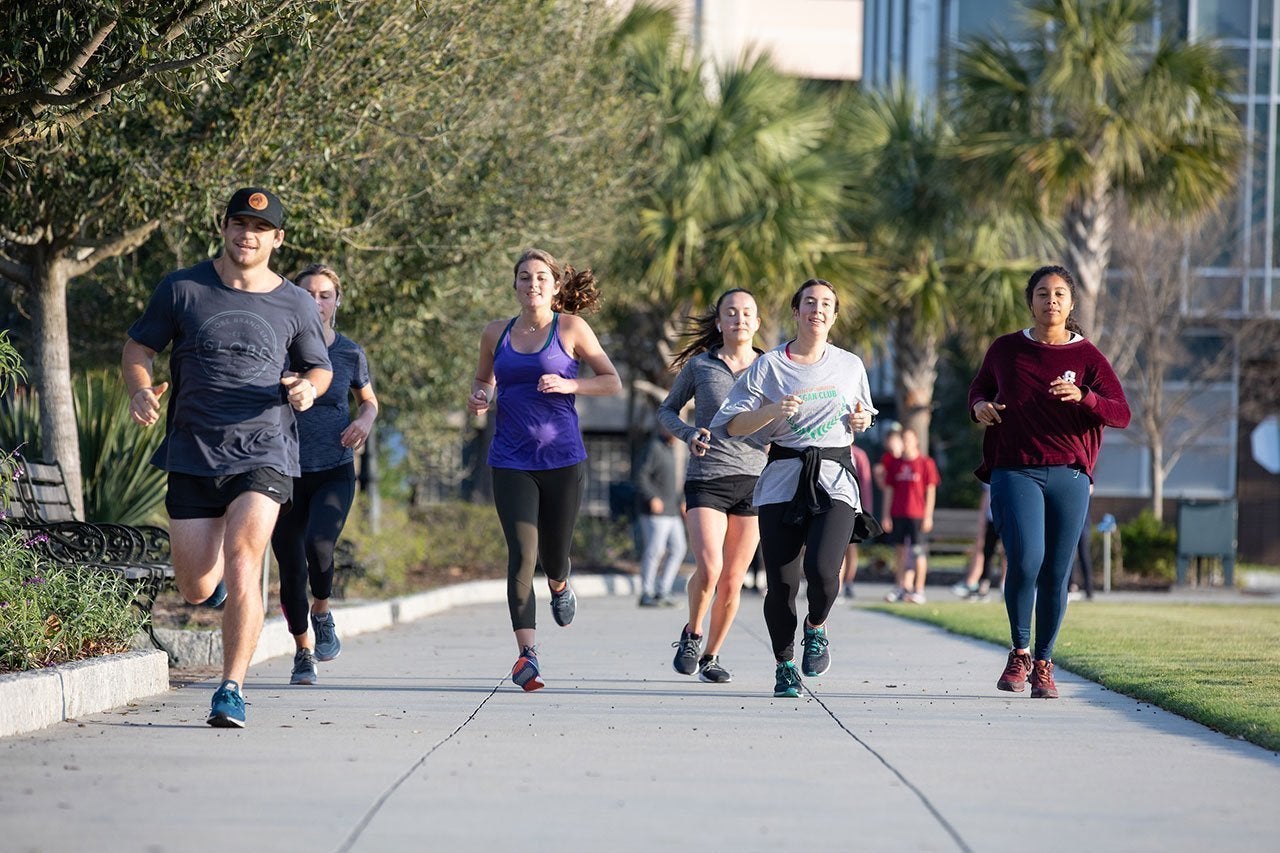The first month of 2022 is almost done – and with it, perhaps, the fading resolve to keep that annual New Year’s resolution to get fit and healthy.
But Kate Pfile ’04, associate professor of exercise science and chair of the Department of Health and Human Performance at the College of Charleston, insists that getting fit doesn’t have to be complicated and it shouldn’t feel like a chore.
“Start with something you already enjoy doing,” says Pfile, who earned her bachelor’s degree in athletic training from the College before going on to receive her doctorate in sports medicine from the University of Virginia. “If you like walking, or you walk your dog every day, add another walk. Think about yardwork or a casual bike ride or walking on the beach. I think there’s a lot of different ways we can incorporate activity into our day-to-day lives that don’t have to be thought of as super-structured exercise. And if you enjoy something, the more likely you are to do it.”
Here are five tips Pfile says can help you stay on track to meet your fitness goals for the year.
1. Exercise doesn’t have to happen all at once.
I think a lot of times we’re like, ‘Oh, I have got to go work out, and that’s a 45-minute endeavor.’ Really, research shows that we can benefit from as little as 10-minute increments of exercise. So, maybe you take three 10-minute walk breaks in a day, and that’s your 30 minutes of daily activity. And if you do that five days a week, then you’re meeting your moderate activity recommendation. So, we can break that up over time – it doesn’t have to be one big chunk. And I think that’s really helpful for people to think about who have busy schedules or a lot of other demands on their time besides just themselves.
2. Find what works for you.
There are a lot of different options when it comes to being more active and physically fit. I think we’re really blessed here in Charleston with just a variety of environments in which we can be physically active. There are a lot of different options in and around town. Yoga, tennis, beach walks, dragon boat racing: You have a lot of choices. Just find something that interests you and stick with it.
3. More is not always more.
Make sure you’re getting adequate rest and recovery time between activities or workouts to prevent injuries. And listen to your body. If you feel like you need to sleep in one morning because you just feel like you’re dragging, then go for it!
4. Stretch after you exercise.
Stretching is most beneficial to our bodies if we’re doing it after our muscles are already warm. When we have warmth within the tissues of our body, then we’re going to have more elasticity within our muscles and tendons. So, if we stretch after exercise, we’re going to see greater gains in flexibility than when we would if we did it beforehand.
5. Proper hydration and fueling during and after workouts are key.
Unless you’re doing prolonged or sustained endurance exercise – something greater than an hour – most people don’t need sports drinks. So, water is going to be sufficient. We don’t need the extra calories that we’re getting or the electrolytes that we’re getting from sports drinks.
But we do want to remember to drink water before, during and after our workouts. A lot of times people don’t drink before. So that’s something to keep in mind: You want to start out hydrated so that you’re not really depleting your supply during exercise.
And then to help with recovery, if you can eat something within 45 minutes of exercise – particularly something that has a good ratio of simple carbohydrates to protein – things like an energy shake or a fruit smoothie with maybe some yogurt in it are good options. Even low-fat chocolate milk is a super-easy grab-and-go to help refuel after a workout. I know we’re not always hungry right after exercise, but if you can just eat a little bit of something within 45 minutes and then prolong a meal later, that will help to work on that recovery process so your body is ready to go the next time.





